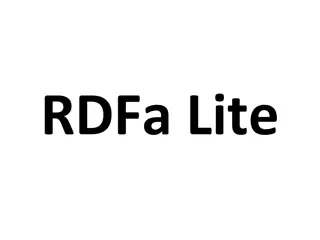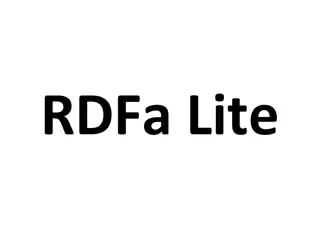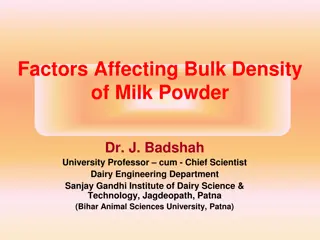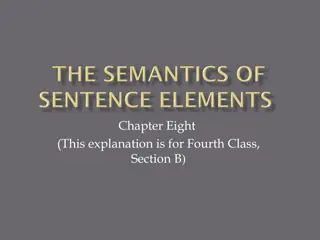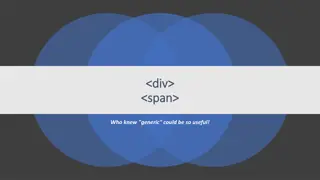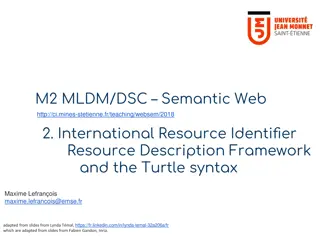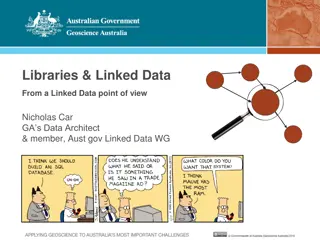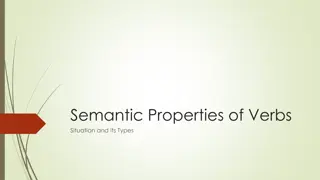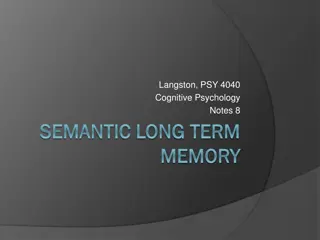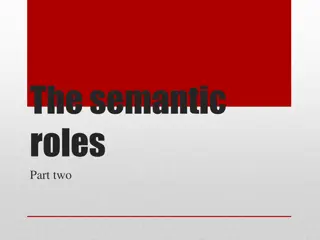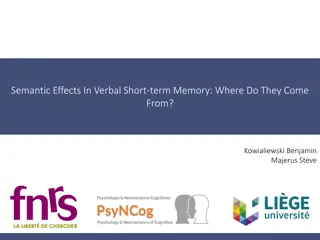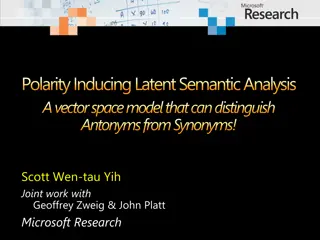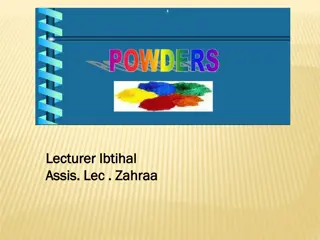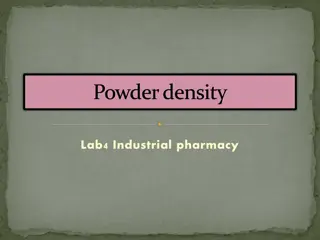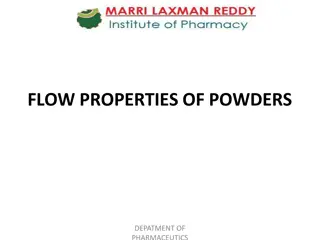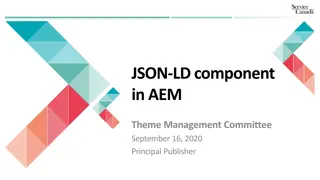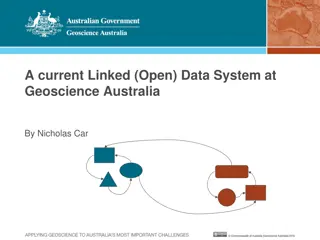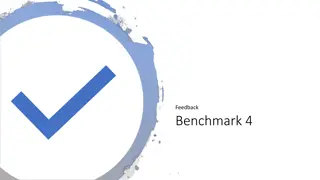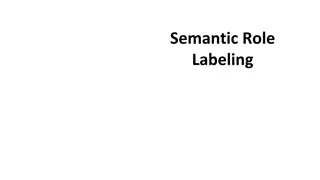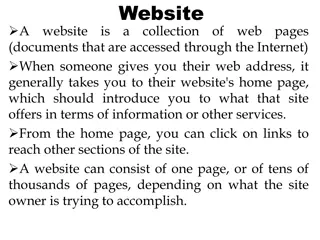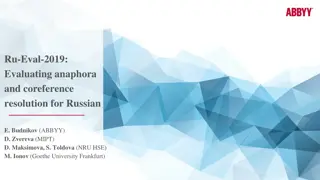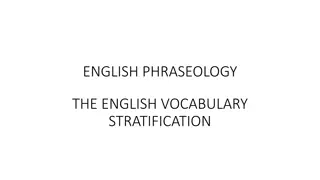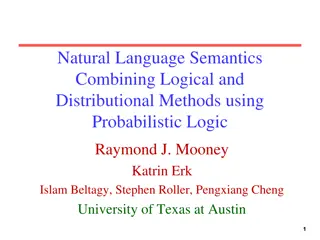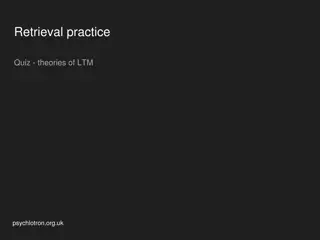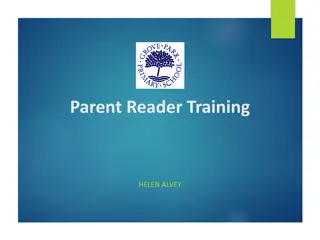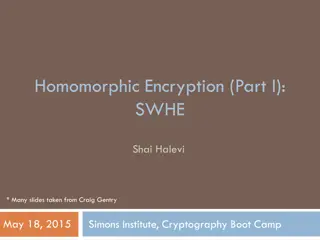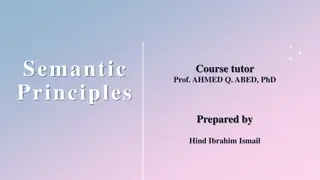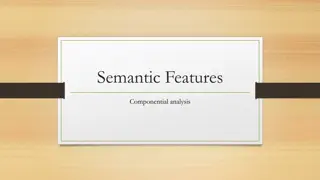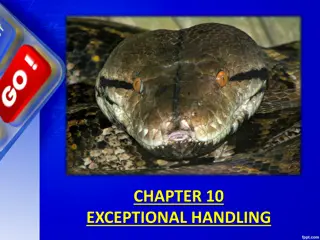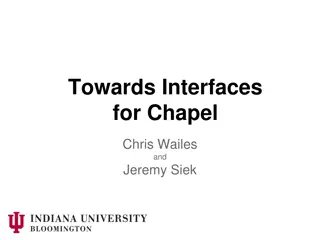Exploring Semantic Web Technologies: RDFa, GRDDL, and POWDER
Delve into the depths of Semantic Web technologies with a focus on RDFa, GRDDL, and POWDER through the guidance of Dr. Nicholas Gibbins. Learn about embedding Semantic Web data, republishing embedded data, and the usage of GRDDL for XML transformations.
Download Presentation

Please find below an Image/Link to download the presentation.
The content on the website is provided AS IS for your information and personal use only. It may not be sold, licensed, or shared on other websites without obtaining consent from the author. Download presentation by click this link. If you encounter any issues during the download, it is possible that the publisher has removed the file from their server.
E N D
Presentation Transcript
Semantic Web in Depth RDFa, GRDDL and POWDER Dr Nicholas Gibbins - nmg@ecs.soton.ac.uk 2013-2014
Embedding Semantic Web Data http://www.flickr.com/photos/40472757@N07/4508416502/
Embedded Data Publishing patterns for linked data that we ve already considered make the assumption that we re publishing directly in RDF/OWL What if the data already exists in a web resource, in some form?
Embedded Data Republishing the data separately introduces redundancy, and the possibility of inconsistency - embed our SW data in the web resource Two main approaches: GRDDL RDFa
GRDDL Given a document in some XML format, how can we extract the relevant portions and make them available to SW agents? GRDDL (Gleaning Resource Descriptions from Dialects of Languages) uses XSLT stylesheets to transform documents XSLT style sheet XML doc RDF/ XML GRDDL Processor
Using GRDDL with XML In well-formed XML, link to XSLT transformation using grddl:transformation attribute Need to introduce grddl: namespace <html xmlns= http://www.w3.org/1999/xhtml xmlns:grddl='http://www.w3.org/2003/g/data-view# grddl:transformation="glean_title.xsl > <head> <title>Are You Experienced?</title> [...] </html>
Using GRDDL with XHTML Link to XSLT transformation using link element Introduce GRDDL in profile <html xmlns="http://www.w3.org/1999/xhtml > <head profile="http://www.w3.org/2003/g/data-view > <title>Some Document</title> <link rel="transformation href="http://www.w3.org/2000/06/dc-extract/dc-extract.xsl" /> <meta name="DC.Subject content="ADAM; Simple Search; Index+; prototype" /> [...] </head> [...] </html>
RDFa Yet another syntax for RDF Designed for embedding structured data in web pages Stored structure in attributes (the a in RDFa )
RDFa Example <html> <head><title>Jo's Friends and Family Blog</title></head> <body> <p>I'm holding one last summer Barbecue, on September 16th at 4pm.</p> <p class="contactinfo >Jo Smith. Web hacker at Example, Inc. You can contact me <a href="mailto:jo@example.org">via email</a>.</p> </body> </html>
Setting namespaces <html prefix= cal: http://example.org/ontology/cal# foaf: http://xmlns.com/foaf/0.1/ xsd: http://www.w3.org/2001/XMLSchema# > <head><title>Jo's Friends and Family Blog</title></head> <body> <p>I'm holding one last summer barbecue, on September 16th at 4pm.</p> <p class="contactinfo >Jo Smith. Web hacker at Example, Inc. You can contact me <a href="mailto:jo@example.org">via email</a>.</p> </body> </html>
Showing an instance of a class Class membership is indicated using the typeof attribute: <p>I'm holding one last summer barbecue, on September 16th at 4pm.</p>
Showing an instance of a class Class membership is indicated using the typeof attribute: <p typeof= cal:Event >I'm holding one last summer barbecue, on September 16th at 4pm.</p> _:a rdf:type cal:Event .
Using properties: predicates The predicate of a triple is indicated using the property attribute: <p>I'm holding one last summer barbecue, on September 16th at 4pm.</p>
Using properties: predicates The predicate of a triple is indicated using the property attribute: <p>I'm holding <span property= cal:summary >one last summer barbecue</span>, on September 16th at 4pm. </p>
Using properties: literal objects The object of a literal-valued triple is given by the content of the element bearing the property attribute <p>I'm holding <span property= cal:summary >one last summer barbecue</span>, on September 16th at 4pm. </p> _:a cal:summary one last summer barbecue .
Using properties: substitute values The content of an element may be substituted for using the content attribute: <p>I'm holding one last summer barbecue, on <span property= cal:start content= 2007-09- 16T16:00:00 >September 16th at 4pm</span>.</p> _:a cal:start 2007-09-16T16:00:00 .
Using properties: datatypes The datatype of a literal-value object is indicated using the datatype attribute: <p>I'm holding one last summer barbecue, on <span property= cal:start datatype= xsd:dateTime content= 2007- 09-16T16:00:00 >September 16th at 4pm</span>.</p> _:a cal:start 2007-09-16T16:00:00 ^^xsd:dateTime .
Using properties: resource objects The object of a resource-valued triple is given by the content of the resource attribute: <p class="contactinfo >Jo Smith. Web hacker at <span property= foaf:workplaceHomepage resource= http://example.org >Example, Inc</span>. You can contact me <a href="mailto:jo@example.org">via email</a>.</p> _:b foaf:workplaceHomepage <http://example.org/> .
Identity The subject of a triple is indicated using the about attribute: <p class="contactinfo >Jo Smith. Web hacker at <span property= foaf:workplaceHomepage resource= http://example.org >Example, Inc</span>. You can contact me <a href="mailto:jo@example.org">via email</a>.</p> _:b foaf:workplaceHomepage <http://example.org/> .
Identity The subject of a triple is indicated using the about attribute: <p class="contactinfo about= http://example.org/staff/jo >Jo Smith. Web hacker at <span property= foaf:workplaceHomepage resource= http://example.org >Example, Inc</span>. You can contact me <a href="mailto:jo@example.org">via email</a>.</p> <http://example.org/staff/jo> foaf:workplaceHomepage <http://example.org/> .
Using existing links Existing links may be used to construct triples with resource- valued objects: <p class="contactinfo about= http://example.org/staff/jo >Jo Smith. Web hacker at Example, Inc. You can contact me <a href="mailto:jo@example.org">via email</a>.</p>
Using existing links The rel attribute is used to indicate the predicate: <p class="contactinfo about= http://example.org/staff/jo >Jo Smith. Web hacker at Example, Inc. You can contact me <a rel= foaf:mbox href="mailto:jo@example.org">via email</a>.</p>
Using existing links The href attribute is used to indicate the object: <p class="contactinfo about= http://example.org/staff/jo >Jo Smith. Web hacker at Example, Inc. You can contact me <a rel= foaf:mbox href="mailto:jo@example.org">via email</a>.</p> <http://example.org/staff/jo> foaf:mbox <mailto:jo@example.org> .
Original File <html> <head><title>Jo's Friends and Family Blog</title></head> <body> <p>I'm holding one last summer barbecue, on September 16th at 4pm.</p> <p class="contactinfo >Jo Smith. Web hacker at Example, Inc. You can contact me <a href="mailto:jo@example.org">via email</a>.</p> </body> </html>
Annotated File <html prefix= cal: http://example.org/ontology/cal# foaf: http://xmlns.com/foaf/0.1/ xsd: http://www.w3.org/2001/XMLSchema# > <head><title>Jo's Friends and Family Blog</title></head> <body> <p typeof= cal:Event >I'm holding <span property= cal:summary >one last summer barbecue</span>, on <span property= cal:start content= 2007-09-16T16:00:00 datatype= xsd:dateTime >September 16th at 4pm</span>.</p> <p class="contactinfo typeof= foaf:Person about= http://example.org/staff/jo > <span property= foaf:name >Jo Smith</span>. Web hacker at <span property= foaf:workplaceHomepage resource= http://example.org >Example, Inc</span>. You can contact me <a rel= foaf:mbox href="mailto:jo@example.org">via email</a>.</p> </body> </html>
Contained Triples _:a rdf:type cal:Event ; cal:summary one last summer barbecue ; cal:start 2007-09-16T16:00:00 ^^xsd:dateTime . <http://example.org/staff/jo> rdf:type foaf:Person ; foaf:name Jo Smith ; foaf:workplaceHomepage <http://example.org> ; foaf:mbox <mailto:jo@example.org> .
Protocol for Web Description Resources RDF lets us make statements about a single resource at a time an RDF triple has only one subject! POWDER is an XML format for describing groups of resources Lineage goes back to PICS Platform for Internet Content Selection
Languages of the Semantic Web 1996 PICS MCF SHOE 1997 1998 RDF(S) 1999 OIL DAML 2000 DAML+OIL 2001 2002 RDF(S) OWL 2003 2004 2005 2006 OWL 1.1 2007 W3C Language 2008 Other OWL 2 2009
General Syntax <powder> </powder> <attribution> //description of entity making the description </attribution> <dr> //description resource <iriset> //specifier for things being described </iriset> <descriptorset> // descriptions of things being described </descriptorset> </dr>
General Syntax <powder> </powder> <attribution> //description of entity making the description </attribution> <dr> //description resource <iriset> //specifier for things being described </iriset> <descriptorset> // descriptions of things being described </descriptorset> </dr>
General Syntax <powder> </powder> <attribution> //description of entity making the description </attribution> <dr> //description resource <iriset> //specifier for things being described </iriset> <descriptorset> // descriptions of things being described </descriptorset> </dr>
General Syntax <powder> </powder> <attribution> //description of entity making the description </attribution> <dr> //description resource <iriset> //specifier for things being described </iriset> <descriptorset> // descriptions of things being described </descriptorset> </dr>
General Syntax <powder> </powder> <attribution> //description of entity making the description </attribution> <dr> //description resource <iriset> //specifier for things being described </iriset> <descriptorset> // descriptions of things being described </descriptorset> </dr>
Example <?xml version="1.0"?> <powder xmlns="http://www.w3.org/2007/05/powder#" xmlns:ex="http://example.org/vocab#"> <attribution> <issuedby src="http://authority.example.org/company.rdf#me" /> <issued>2007-12-14T00:00:00</issued> </attribution> <dr> <iriset> <includehosts>example.com</includehosts> </iriset> <descriptorset> <ex:color>red</ex:color> <ex:shape>square</ex:shape> <displaytext>Everything on example.com is red and square</displaytext> <displayicon src="http://authority.example.org/icon.png" /> </descriptorset> </dr> </powder>
Further Reading Gleaning Resource Descriptions from Dialects of Languages W3C Recommendation 11 September 2007 http://www.w3.org/TR/grddl/ RDFa Core 1.1 W3C Recommendation 22 August 2013 http://www.w3.org/TR/rdfa-syntax/ RDFa 1.1 Primer (essential reading!) W3C Working Group Note 22 August 2013 http://www.w3.org/TR/xhtml-rdfa-primer/ POWDER Primer W3C Working Group Note 1 September 2009 http://www.w3.org/TR/powder-primer/


